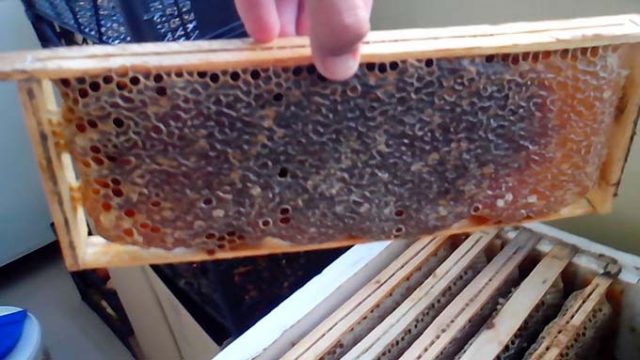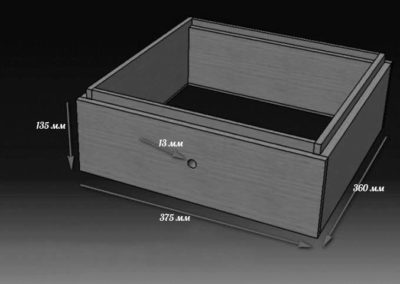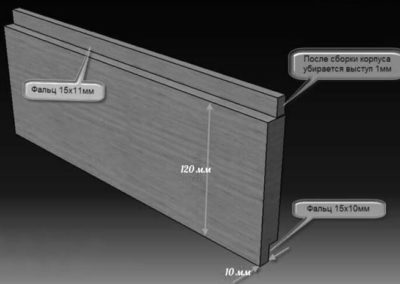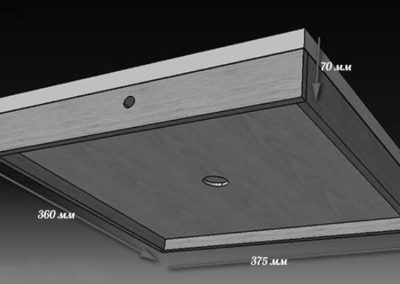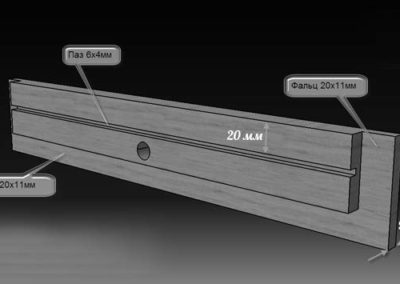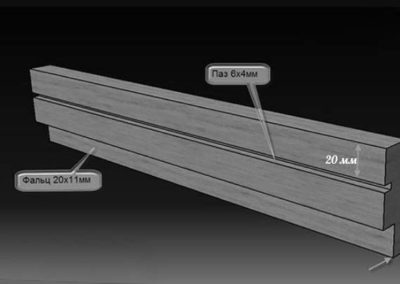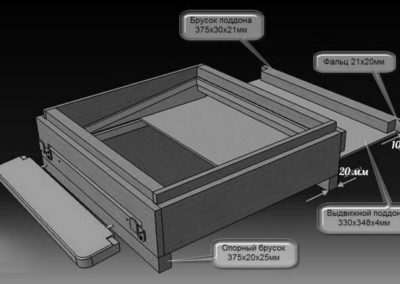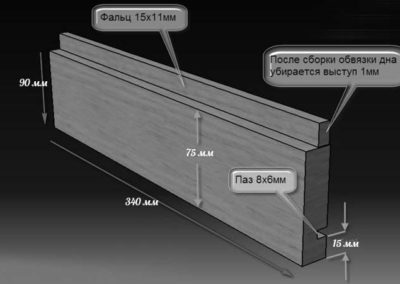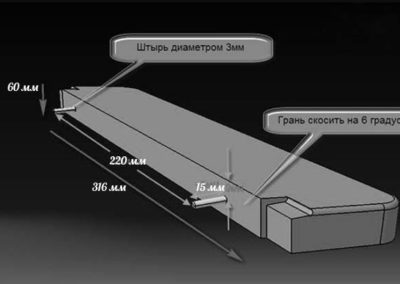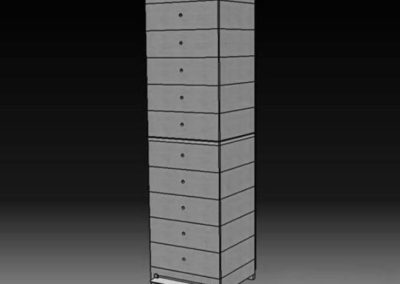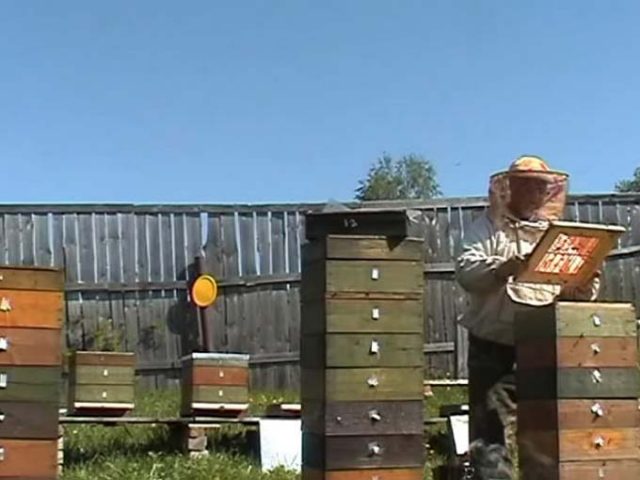Content
Beehive Boa constrictor was invented by Vladimir Davydov. The design is popular among novice beekeepers and avid beekeepers. It is difficult to assemble a hive on your own. You will need the skills of a carpenter, the availability of woodworking tools. In addition to the hives themselves, you still have to make frames, since the standard ones will not fit in size.
Features of boa constrictor hives
A feature of the Boa constrictor is considered to be small. In the beehive, frames are used with a size of 280x110 mm. Compared to the Dadanov model (345x300 mm), they are almost a quarter less. Due to the small size of the foundation, the Boa frames do without a stretched wire. The honeycomb is held by the cut in the upper bar. This device is liked by many beekeepers, due to the speed of nasching, since the traditional pulling of the wire onto the frames requires an additional investment of time. In addition, the wire tends to stretch during operation, which is accompanied by sagging.
The hive consists of body sections. Each compartment of the house holds 9 small frames. When all the honeycombs are filled with honey, the mass of the section reaches 13 kg. There is a ventilation hole in the center of the ceiling in the Boa. Due to it and the entrances, all sections are efficiently ventilated.
A big plus of the house is the presence of a basement compartment. The pull-out tray allows you to conveniently install the anti-mite net in the hive.
Advantages and disadvantages
Among the advantages of boa hives, the following points are distinguished:
- low weight of each section of the hive;
- a small honeycomb frame is well mastered by bees even with small bribes;
- there is no need to use insulating mats, since a favorable microclimate is maintained inside a small hive;
- the availability of hatching queens in the hive eliminates the need for cores;
- the bottom tray makes it easy to clean the hive of dead bees and ticks killed during processing.
The boa constrictor is convenient to use. The sections are easy to carry during honey pumping. Each standard honey extractor cassette holds 2 frames. Due to the lack of wire, the honeycomb can be neatly cut with a knife for sale. All elements of the boa constrictor hive are interchangeable. The beekeeper can single-handedly swap sections, frames.
The boa constrictor is practically devoid of flaws. The beekeeper himself is able to create an inconvenience for himself if the hive is used improperly. To save space, the beekeeper builds up a large number of sections. Consisting of 10 or more bodies, the Boa constrictor turns out to be tall. The upper tiers are difficult to maintain. The section with honey is difficult to shoot from a height.
Sometimes beekeepers consider the presence of a large number of bodies and other elements as a disadvantage of the Boa hive. It takes extra time to add them. However, the assembled hive is compact and easy to maintain.
How to make a beehive Boa constrictor with your own hands
The assembly of the hive is carried out according to the drawings. To make your own Boa constrictor, you need high-quality dry wood and woodworking tools.
Drawings and dimensions
A selection of dimensional drawings will help you make your own beehives.
Hives
In each section of the Boa, the front and side shelves have a size of 375x135x30 mm. Sidewall parameters - 340x135x30 mm.The front and rear element of the bottom trim is cut out with a size of 375x90x30 mm. The side element of the bottom trim has dimensions of 340x90x30 mm. The size of the boa lid is 375x360x70 mm, and its sidewalls are 342x65x20 mm.
The complexity of assembling the hive is the need to cut a large number of grooves. On the front and rear housing element, 4 recesses are required: bottom, top and sides. Inside the case, in the upper part, a groove is made for fixing the frame. At the ends of the sections, an inner and outer seam is cut out to connect the bodies.
Framework
The size of the finished frame for Udav is 280x110 mm. It is made from a polished lath. A through-cut is made on the upper element for fixing the foundation. The dimensions and thickness of the slats are shown in the diagram. The elements are fastened with nails or self-tapping screws.
Required tools and materials
To make your own boa hive, you need a woodworking tool. First of all, you need a compact circular saw to cut the board. It is convenient to process workpieces with a planer-thicknessing machine. The jigsaw will help you make a precise fit. The tap hole is cut with a hand mill. The screwdriver will speed up the assembly of the sections. You will also need a stapler from the tool, designed for staples measuring 14 mm.
Collection
For the manufacture of hives, only a dry board is used. The optimum thickness is 35-40 mm. The elements are collected in a quarter. The screed is carried out with self-tapping screws. A visual instruction for the manufacture of walls is presented in the video:
The front element of each section of the hive is equipped with a slot for a tap hole with a diameter of 13 mm. On the side shelves, blind cuts are made from the outside, acting as handles. The bottom of the Boa constrictor is combined. The pull-out tray is cut out of plywood, and it slides out together with the back wall. The bottom is described in more detail in the video:
The cover of the hive resembles sandwich panels. The structure is made of two wooden panels with heat-insulating material between them. The inner panel is usually cut out of plywood, and the insulation is sheet polystyrene. A vent hole is cut in the center of the cover. In addition, plugs are cut out of the tree to close the entrance.
Keeping bees in boa hives
For hives Boa constrictor beekeeping does not differ from classical technology. It is necessary to take into account only the peculiarity of the multi-housing house. A feature of the Udav is the preservation of heat in the nest when rearranging the sections in cool weather.
The bees are hibernated in 4 or 5 sections. With the onset of spring, retractable trays are cleared of debris, dead bees. Experienced beekeepers stock up on spare bottoms. In the spring, a clean tray is inserted into the hive, and the dirty one is sent for disinfection.
After cleaning the bottom of the hive, they begin to inspect the nests. They look at the brood, the state of the bees, the available food. Most often, the two lower housings are empty. They are removed from the hive, and returned 10 days after the flight. The new section is completed with foundation, placed against the nest. A dividing grid is placed under the body. The first bribe is expected.
Further actions are aimed at expanding the hives. Sections are added ahead of the increase in bee colonies. There should always be a reserve of space in the hive to avoid swarming. When collecting honey, the lower bodies are removed first. They will be empty or filled with perga. Ripe honey will always be on top. In preparation for wintering, about 8 kg of honey is left in the lower building for food for bees.
Conclusion of queens in a hive Boa constrictor
In the reviews, the boa constrictor hive is characterized by a convenient design that simplifies the withdrawal of queens. For these purposes, a special bottom is made. Its dimensions correspond to the section, but differ in lower height. The structure consists of a sheet of plywood with side rails. In the front shelf there is a notch with a fixed bar for the arrival of bees.
To remove the queens in the hive, the Boa constrictor performs a number of actions:
- The section of the Boa constrictor is divided into two equal parts. Each compartment is equipped with two frames: one with a closed brood, the other unsealed or with a fistulous queen cell. Be sure to put a frame for the feed with honeycombs filled with honey.
- The hive section is covered with a lid-bottom. The next tier of the hull is built up from above. The arrangement procedure is repeated.
- In each body of the hive, two queens are formed. Usually they are taken out 8 pieces in one Boa. The holes of each case are rotated 90about, directing them in different directions of the world.
- When the queens are hatched, families are united or seated in other hives.
Convenience of the Boa constitutes the absence of the need to use cores. For the Dadans, this method of removing the queen is not available due to the limited number of bees.
Conclusion
The boa beehive is convenient for amateur apiaries. The house is compact, neat, light weight of each section. However, productivity is average. Up to 60 kg of honey is obtained from one bee colony.
